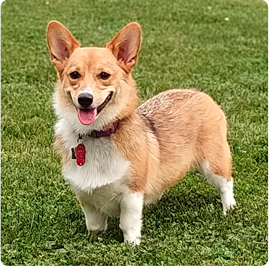8 Awesome Enrichment Programs for Shelter Dogs
I’m constantly amazed by the passion of people who work in animal rescue. There are so many homeless pets waiting to find happy forever homes – approximately 7.6 million companion animals enter shelters in the United States each year, including 3.9 million dogs. So it’s exciting when shelter employees and volunteers get creative about ways to help increase adoptions with innovative enrichment programs.
- Sometimes when dogs are first brought to a shelter, they’ve been through a traumatic experience and are too shy or fearful even to go for a walk. So in New York, the ASPCA implemented a “Storytelling Program.” There are 116 volunteers who read books, magazines or newspapers to dogs staying in the ASPCA’s Canine Annex for Recovery and Enrichment. The dogs might bark frantically when the reader approaches their see-through (and hear-through) door, but soon they settle down, relax on their blankets and listen to the soothing voice. The reading time provides enrichment and helps the pups get used to meeting new people, a critical part of being ready for adoption.
- The Texas SPCA recognizes the need to decrease “kennel stress,” which their website describes as “the confinement insanity that occurs when animals are kept in enclosures for extended periods without enough opportunities to exercise, think, socialize and rest.” So the shelter provides enrichment in a variety of ways, such as playing classical music and recordings of chirping birds, offering varied scents such as broth and fruit, training dogs to “sit” and obey other commands, allowing time to play outside and giving treats in unusual ways, from being frozen in ice cubes to tucked into foraging toys. Check out their shelters in Dallas and McKinney if you’re in Northern Texas!
- The Humane Society of Pagosa Springs recently enlisted the help of trainers from our friends at Durango Dog College to boost enrichment activities at the shelter. Now adoptions are up because the trainers teach dogs obedience skills and because of thoughtful ideas like providing an aromatherapy diffuser with calming oils at night. The dogs are even learning “nose work” – volunteers hide hot dogs in tubes and urge the dogs to “search.” That way if it’s raining or snowing outside, the dogs can still get mental enrichment indoors.
- While environmental enrichment for canines often involves problem solving with games like puzzle feeders – one reason PAW5 donates Rock ‘N Bowls to animal shelters – on a more basic level, it’s about companionship, which is usually the primary need of older dogs. Senior dogs in shelters are typically housebroken, calm and don’t need a lot of exercise – they just want to rest near a human – but they’re often the last pets to be adopted. So Black Canyon Animal Sanctuary created a “Silver Whiskers” program that matches “mature pets and people.” The shelter provides food, veterinary care and supplies to senior adopters so that there aren’t financial barriers to participating. The senior people gain a loyal, low maintenance companion, and the senior dogs get to live out their lives in the comfort of a loving home.
- The La Plata County Humane Society in my adopted hometown of Durango, Colo. hasn’t had to euthanize a dog for space in over six years because of creative enrichment programs. Building a fenced play yard was just a start. Staff and volunteers take adoptable dogs into local elementary schools as part of the “Read to a Dog Program” – the dogs get to be in a new environment and socialize with young people, and kids with literacy challenges gain confidence reading stories to a nonjudgmental canine. The shelter also takes dogs to our juvenile detention center, where at-risk youth learn to train them for adoption.
- I absolutely love prison dog programs. Basically, rescued dogs live with prison inmates 24/7 to be socialized and trained in basic obedience for adoption. It’s a total win/win – the dogs get a second chance, and the inmates cultivate responsibility and empathy. There are fantastic prison dog programs popping up around the country. My friend Holly’s parents adopted a dog through “Pups on Parole” in Las Vegas, a program at a women’s prison run by Heaven Can Wait Sanctuary. They can’t say enough good things about the program (and their pup!).
- When a natural disaster like a hurricane or a tornado devastates a town, many dogs and cats suddenly wind up in shelters. So it’s inspiring that quilters across the country are part of The Quilt Pattern Magazine’s Kennel Quilt Team. When disaster strikes, these kind souls fill requests from PetFinder.com (a searchable database of adoptable pets in North America) to make quilts for newly homeless animals. The soft quilts smell like people and make cages infinitely more comfortable for traumatized pets. As a Hurricane Katrina evacuee, I find this initiative so moving!
Additionally, sewing machine company Bernina is hosting sewing events with local shelters around the country this year to create thousands of kennel quilts for shelters. And $30,000 from the sales of their 2016 Bernina 350 Special Edition Best Friend machine – which features a paw print quilt design – will be donated to the Petfinder Foundation, a nonprofit that works to prevent the euthanasia of adoptable pets. Isn’t it incredible how the sewing community is enriching the lives of shelter pets?
- Sometimes dogs themselves are enrichment for shelter animals. The Arizona Humane Society has a program in which gentle, loving dogs spend time in their kitten nursery to help kitties get used to dogs and make them more adoptable. Kittens 2-7 weeks old who spend time with dogs are much more likely to get along with other animals, which is so important since many homes have multiple pets. The shelter’s first kitten nanny was Boots, a golden retriever/chow mix. Boots is proof that dogs aren’t just man’s best friend – they enrich so many lives!







